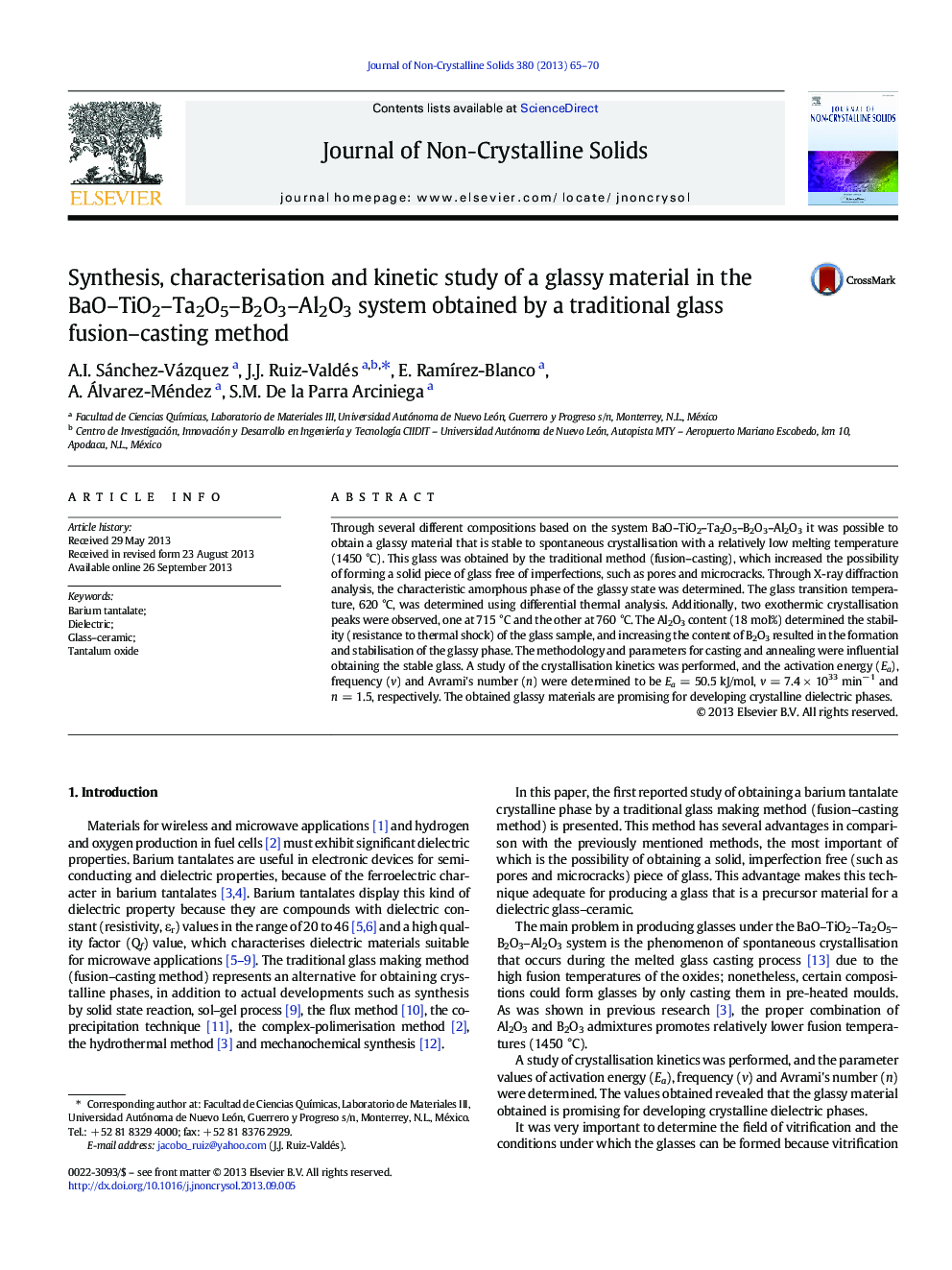| کد مقاله | کد نشریه | سال انتشار | مقاله انگلیسی | نسخه تمام متن |
|---|---|---|---|---|
| 1481183 | 1510458 | 2013 | 6 صفحه PDF | دانلود رایگان |

• Stable glass can be produced in the BaO–TiO2–Ta2O5–B2O3–Al2O3 system at 1450 °C.
• Al2O3 content determined the stability and resistance to thermal shock of the glass.
• B2O3 content up to 30 mol% resulted in the formation of the glassy phase.
• DTA analysis showed that controlled crystallization can be made at low temperature.
• DRX analysis determined the characteristic glassy phase of the sample glass.
Through several different compositions based on the system BaO–TiO2–Ta2O5–B2O3–Al2O3 it was possible to obtain a glassy material that is stable to spontaneous crystallisation with a relatively low melting temperature (1450 °C). This glass was obtained by the traditional method (fusion–casting), which increased the possibility of forming a solid piece of glass free of imperfections, such as pores and microcracks. Through X-ray diffraction analysis, the characteristic amorphous phase of the glassy state was determined. The glass transition temperature, 620 °C, was determined using differential thermal analysis. Additionally, two exothermic crystallisation peaks were observed, one at 715 °C and the other at 760 °C. The Al2O3 content (18 mol%) determined the stability (resistance to thermal shock) of the glass sample, and increasing the content of B2O3 resulted in the formation and stabilisation of the glassy phase. The methodology and parameters for casting and annealing were influential obtaining the stable glass. A study of the crystallisation kinetics was performed, and the activation energy (Ea), frequency (v) and Avrami's number (n) were determined to be Ea = 50.5 kJ/mol, v = 7.4 × 1033 min− 1 and n = 1.5, respectively. The obtained glassy materials are promising for developing crystalline dielectric phases.
Journal: Journal of Non-Crystalline Solids - Volume 380, 15 November 2013, Pages 65–70